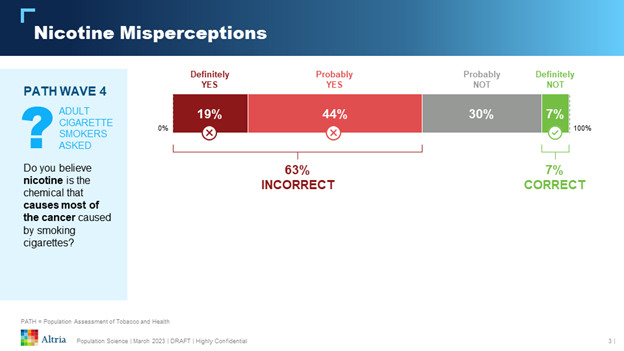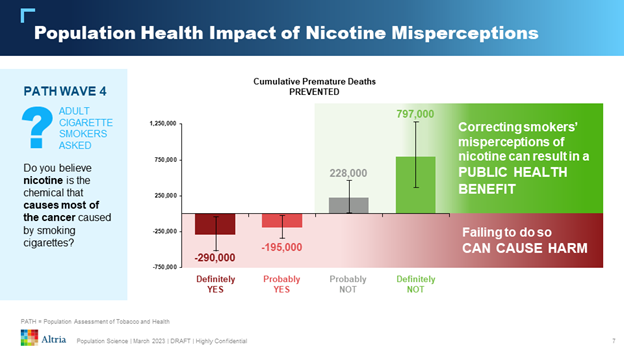Tobacco Merchants Association Annual Meeting 2023

Population Health Impact Associated with Nicotine Perceptions
To kick off the 2023 Tobacco Merchants Association Annual (TMA) Meeting, Dr. Hannel joined a panel to discuss nicotine misperceptions and harm reduction. During the session, Dr. Hannel shared results of a model based on data from the Population Assessment of Tobacco and Health (PATH) Study, which shows correcting nicotine misperceptions among adults who smoke could prevent nearly 800,000 premature deaths over an 85-year period.
While not risk free, nicotine is not what causes the majority of harm caused by smoking cigarettes. As the Food and Drug Administration (FDA) says on its website, “Nicotine is what keeps people using tobacco products. However, it’s the thousands of chemicals contained in tobacco and tobacco smoke that make tobacco use so deadly.”1 However, analysis of Wave 4 data from PATH, which is a collaboration by the National Institutes of Health (NIH) and FDA, shows that 63% of adults who smoke have an incorrect understanding of nicotine.
And when looking at the transition probability to smoke-free products, Thad observed adults who smoke with an incorrect understanding of the risks of nicotine are associated with lower rates of switching compared to those with a correct understanding.
We continue to advocate for FDA to develop and deliver targeted communications – aimed at adults who smoke and the health care providers they look to for advice – about the role of nicotine and the relative risks of combustible and smoke-free products.2 By helping to correct nicotine misperceptions, FDA can help eliminate a clear barrier to tobacco harm reduction for adults who smoke while minimizing reach to unintended audiences, including youth.
You can view Dr. Hannel’s presentation, “Population Health Impact Associated with Nicotine Perceptions” here.






